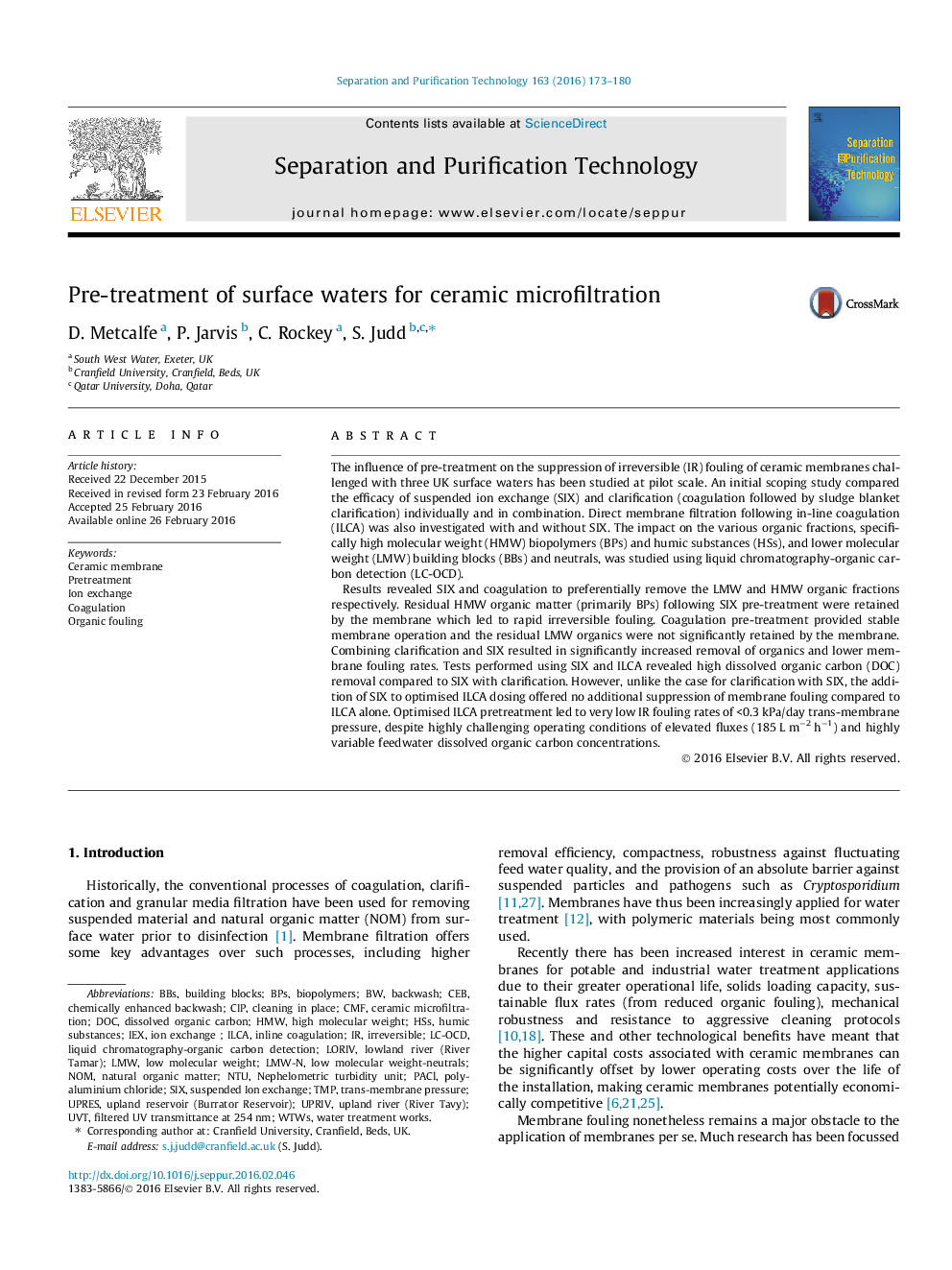| Article ID | Journal | Published Year | Pages | File Type |
|---|---|---|---|---|
| 640091 | Separation and Purification Technology | 2016 | 8 Pages |
Abstract
Results revealed SIX and coagulation to preferentially remove the LMW and HMW organic fractions respectively. Residual HMW organic matter (primarily BPs) following SIX pre-treatment were retained by the membrane which led to rapid irreversible fouling. Coagulation pre-treatment provided stable membrane operation and the residual LMW organics were not significantly retained by the membrane. Combining clarification and SIX resulted in significantly increased removal of organics and lower membrane fouling rates. Tests performed using SIX and ILCA revealed high dissolved organic carbon (DOC) removal compared to SIX with clarification. However, unlike the case for clarification with SIX, the addition of SIX to optimised ILCA dosing offered no additional suppression of membrane fouling compared to ILCA alone. Optimised ILCA pretreatment led to very low IR fouling rates of <0.3Â kPa/day trans-membrane pressure, despite highly challenging operating conditions of elevated fluxes (185Â LÂ mâ2Â hâ1) and highly variable feedwater dissolved organic carbon concentrations.
Keywords
LMWUVTCeramic microfiltrationCEBHSsCMFBPSBBSLC-OCDPAClHMWNTUTMPCIPDOCIEXCoagulationBuilding blocksIon exchangeCleaning in placeBiopolymersSIXChemically enhanced backwashBackwashCeramic membraneIrreversibleOrganic foulingtrans-membrane pressureNatural organic matterHumic substancesNOMnephelometric turbidity unithigh molecular weightlow molecular weightPretreatmentDissolved organic carbon
Related Topics
Physical Sciences and Engineering
Chemical Engineering
Filtration and Separation
Authors
D. Metcalfe, P. Jarvis, C. Rockey, S. Judd,
